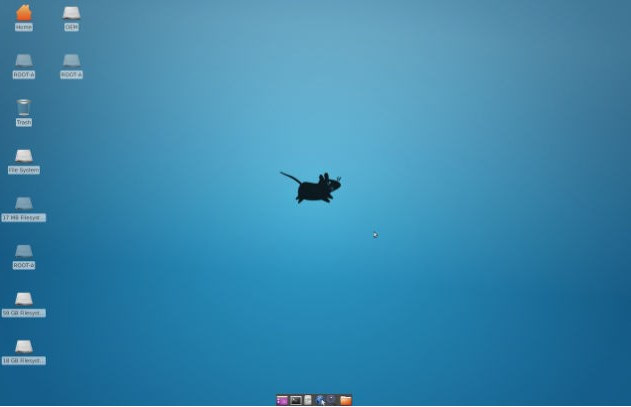Instructions for installing Linux operating system on Chromebook
Linux operating system is becoming very popular because of its amazing performance as well as many features in this compact operating system.And above all, this operating system is completely free.Now the problem that confuses users is how to install Linux on laptops, desktops, notebooks or Chromebooks.It's easy to install Linux on a laptop or desktop computer, but for Chromebooks, the installation becomes more difficult.Chromebooks are not just browsers and it can also be used to run Linux!This article provides detailed instructions to help you install Linux on your Chromebook, so please follow it.
There are two basic ways you can install the Linux environment on the device, either dual-boot using Chrubuntu or using chroot with Crouton tool.The following article will guide users how to implement using Crouton tool.
Steps to install Linux operating system on Chromebook
1.First of all, turn on Developer mode on developer. To do this, hold down the Esc + Refresh key and while still holding the two keys press the Power button. When the computer restarts, you will be able to access Recovery mode .For older versions, it is possible to switch to developer mode with some physical buttons

2. Now when in system recovery mode press 'Ctrl + D ' and the prompt window will appear.Your device will boot in developer mode.While in developer mode, local Chromebook data will be deleted, it will take about 15 minutes to delete all of your system data.

3. From now on when you start your Chromebook, ascreen with a red exclamation mark and 'OS verification is OFF ' will appear , indicating that you are using a Chromebook in Developer mode, pressing Ctrl + Dor waiting for 30 Seconds to continue to boot.
4. Download and install Crouton, then pressCtrl + Alt + T anywhere in the Chrome operating system, the terminal window will appear . Now enter the command 'shell' in the terminal window and press the Enterkey.You will then be in Linux Shell mode, if the command does not work, you may not be in developer mode, check it and do it again.
5. Enter the command 'sudo enter-chroot startxfce4 ″ and then ' sudo startxfce4 " to enterCrouton.

6. To switch between different operating systems or operating systems, pressCtrl + Alt + Shift + Back and Ctrl + Alt + Shift + Forward. For Chromebooks running ARM chips, the forward and back keys can be replaced with arrow keys. For Chromebooks running Intel x86 / AMD64 chips press Ctrl + Alt + Back and Ctrl + Alt + Forward plus Ctrl + Alt + Refresh.

7. To exit the chroot environment, use theShut Down command, but if you want to start chroot again, run the command 'sudo startxfce4' . Reset the Chromebook by turning off Developer mode and restarting the device.
Above is the whole process of installing the Linux operating system on a Chromebook using the Crouton method.This method can be used for most Chromebook devices, and you'll be able to run both Chromebook and Linux operating systems on the same device, switch easily with just one click.
- 5 ways to run Linux software on Windows
 Decode how the package manager works and software installation on Linux
Decode how the package manager works and software installation on Linux Windows Subsystem for Linux is about to appear on Windows Server
Windows Subsystem for Linux is about to appear on Windows Server How to secure Linux Ubuntu with two-factor authentication
How to secure Linux Ubuntu with two-factor authentication Instructions for automatic VPN connection on Linux
Instructions for automatic VPN connection on Linux Manage Nvidia Optimus chipset in Ubuntu with Bumblebee
Manage Nvidia Optimus chipset in Ubuntu with Bumblebee 10 things to keep in mind when switching to Linux mobile operating system
10 things to keep in mind when switching to Linux mobile operating system